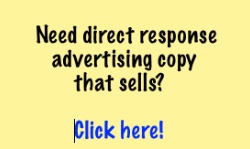“You think you’ve got problems?
“Well, I remember when a bank turned me down for $200 loan. Now I lend money to the bank — Certificates of Deposit at $100,000 a crack.
“I remember the day a car dealer got a little nervous because I was a couple of months behind in my payments — and repossessed my car. Now I own a Rolls Royce. I paid $43,000 for it — cash.
“I remember the day my wife phoned me, crying, because the landlord had shown up at the house, demanding his rent — and we didn’t have the money to pay it.
“Now we own five homes. Two are on the oceanfront in California (I use one as my office). One is a lakefront “cabin” in Washington, (that’s where we spend the whole summer — loafing, fishing, swimming, and sailing.) One is a condominium on a sunny beach in Mexico. And one is snuggled right on the best beach of the best island in Hawaii — Maui.”
Thus starts Joe Karbo’s successful space ad from the early 1970s, “Too Busy Earning a Living to Make Any Money?,” selling his justly famous book, The Lazy Man’s Way to Riches.
There’s so much to unpack in this powerful lead, but right now I want to focus on the power of storytelling.
While Karbo’s ad doesn’t tell a classic narrative story, it still tells a powerful story — the story of a man who was down on his luck (to put it mildly), and what happened when he discovered the real secret to making money.
One of the reasons the ad worked so well is that we humans love compelling stories — especially stories about underdogs overcoming obstacles and ultimately coming out on top. Think Ragged Dick, Luke Skywalker, Harry Potter and, of course, Joe Karbo.
By telling a good story in your advertising, you can slip right past your prospect’s natural defenses to share why your product or service is the key to them getting what they want.
And your prospects will find it a lot more interesting and compelling than a bare recitation of facts or a laundry list of benefits.
I can’t say it any better than fundraising legend Jerry Huntsinger in his classic guide Fund Raising Letters:
“Give up some of your cherished logic — and start telling stories. Instead of quoting figures about starvation in East Africa, tell the story of one mother who is watching her family starve.
“Instead of explaining in great medical detail the principal causes of lung cancer, tell about one single person with black death, his fears, his expense.
“Don’t dwell on the $50,000 needed for the scholarship fund. Instead, focus in on that freshman Dick Jones, and tell how a $100 scholarship will help him finish the semester.
“Instead of statistical examples on broken arms, and big toe transplants, feature a mother finding the greatest happiness in life when she gives birth to her first son.”
Bottom line: Start telling more stories in your sales copy… stories about people whose lives have been changed by your product or service… stories about those who ignored your product or service and crashed and burned as a result… and stories about how you discovered the secrets you are so eager to share with your prospects.
And then sit back and watch your response soar.

